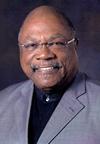
Blog
1967 Remembered In Commemoration, Not Celebration
The talk in the city of Detroit by some in the business community or elsewhere concerning the upcoming commemoration of the 1967 rebellion raises a serious question: Does everyone understand the difference between celebration and commemoration?
Celebration is the act of marking one’s pleasure at an important event or occasion by engaging in a typical social activity. Commemoration is expressed in a ceremony that is intended to remember an event or person from the past; serves as a memorial or a reminder of things that have occurred.
In 1967, 43 lives were lost in Detroit, 1,189 injuries, 7,231 arrests (youngest 4 and oldest 82), 2,509 businesses looted or burned, 388 families left homeless, and 412 were buildings burned or damaged. Property damage losses ranged from $40-60 million dollars. The citizens of Detroit were at odds with the social and political conditions in this community. There is nothing celebratory about people dying, businesses burning, or lives being torn asunder. There is something to be said about coming together in spite of differences to build a new foundation on which people could feel they matter, and that institutions could change in positive commemoration.
In 1967, Detroiters felt that the police department was an army of occupation. The Detroit Free Press even conducted a survey in which residents of Detroit indicated that “police brutality was the number one problem” encountered. The Kerner Commission reporting on civil disorder in 1968 indicated, “45 percent of police working in black neighborhoods were ‘extremely anti-negro’ and an additional 34 percent were ‘prejudiced.’ 93 percent of the police force was still white in a city where over 30 percent of the residents were African Americans.” The “Big 4,” known throughout the black community, made up of four police officers patrolling through the neighborhoods, were often viewed as instruments of harassment and intimidation.
In 1967, members of the fire department did not reflect the community in which they were charged to put out fires. Very few African Americans were members of the department. Even Rosa Parks, living in Detroit, said during an interview in 1964 that, “I don’t feel a great deal of difference here than in Alabama. Housing segregation is just as bad and seems more noticeable in the larger cities.”
Sidney Fine of the University of Michigan indicated in his report, Violence in the Model City, that African Americans were upset with social conditions in Detroit. Fine included as its causes, “policing, housing, employment, spatial segregation within the city, mistreatment by merchants, too few recreation facilities, poor quality education, access to medical services, and the poverty index in the city of Detroit.” There was no police review board and no regular promotion of local citizens, to include African Americans, in the department. Those are areas of commemoration, not celebration.
I don’t feel a great deal of difference here than in Alabama. Housing segregation is just as bad and seems more noticeable in the larger cities.
Suggesting that we should not pause to reflect and remember the bad old days so that they will never, ever be repeated is not only irresponsible, it is insensitive. As a Christian, I commemorate the crucifixion. I celebrate the resurrection. Each year Bloody Sunday, which occurred in Alabama, 1965, is a commemoration, not a celebration as blood was spilled on that Edmund Pettus Bridge. While we commemorate the tragic death of Dr. Martin Luther King Jr., we more importantly engage in the celebration of his life. We do not celebrate the tragedy and the loss of life on 9/11. We commemorate those who demonstrated the American spirit of freedom and democracy during 9/11.
In 1967, we had one African American out of nine as a member of the Common Council, while today, seven out of nine are members of the City Council. This city has been led by five African American mayors. The police and fire departments have more African Americans than we did in 1967, including a Chief of Police and Fire Commissioner. There is an active Board of Police Commissioners that did not exist 50 years ago. Community policing along with body cams are now a major factor in this city. Both the Wayne County Prosecutor and Wayne County Executive are African Americans.
Jobs are returning to the city. There are more African Americans throughout the labor community in leadership than we knew 50 years ago. Following the largest bankruptcy by any municipality in the country, which many of us still question, Detroit is moving in a new direction.
Detroit is not a perfect city, but it looks better than it did in 1967. That is something to both commemorate and to celebrate. Now, before anyone writes and says, “so you must be happy with the way things are,” save your ink. None of us can be satisfied until full employment, quality schools, and economic access and opportunity for business development are achieved. Our neighborhoods must become centers for thriving families, social and economic enhancement, and a life for our children that is second to none. Rather than being frightened by the commemoration of our past, let us be energized by the possibility of our future.
